 W
WThe history of literature is the historical development of writings in prose or poetry that attempt to provide entertainment, enlightenment, or instruction to the reader/listener/observer, as well as the development of the literary techniques used in the communication of these pieces. Not all writings constitute literature. Some recorded materials, such as compilations of data are not considered literature, and this article relates only to the evolution of the works defined above.
 W
WMedieval literature is a broad subject, encompassing essentially all written works available in Europe and beyond during the Middle Ages. The literature of this time was composed of religious writings as well as secular works. Just as in modern literature, it is a complex and rich field of study, from the utterly sacred to the exuberantly profane, touching all points in-between. Works of literature are often grouped by place of origin, language, and genre.
 W
WElizabethan literature refers to bodies of work produced during the reign of Queen Elizabeth I (1558–1603), and is one of the most splendid ages of English literature. In addition to drama and the theatre, it saw a flowering of poetry, with new forms like the sonnet, the Spenserian stanza, and dramatic blank verse, as well as prose, including historical chronicles, pamphlets, and the first English novels. Major writers include William Shakespeare, Edmund Spenser, Christopher Marlowe, Richard Hooker, Ben Jonson, and Philip Sidney.
 W
WRestoration literature is the English literature written during the historical period commonly referred to as the English Restoration (1660–1689), which corresponds to the last years of Stuart reign in England, Scotland, Wales, and Ireland. In general, the term is used to denote roughly homogenous styles of literature that centre on a celebration of or reaction to the restored court of Charles II. It is a literature that includes extremes, for it encompasses both Paradise Lost and the Earl of Rochester's Sodom, the high-spirited sexual comedy of The Country Wife and the moral wisdom of The Pilgrim's Progress. It saw Locke's Treatises of Government, the founding of the Royal Society, the experiments and holy meditations of Robert Boyle, the hysterical attacks on theatres from Jeremy Collier, and the pioneering of literary criticism from John Dryden and John Dennis. The period witnessed news become a commodity, the essay develop into a periodical art form, and the beginnings of textual criticism.
 W
WThis article presents lists of the literary events and publications in the 12th century.
 W
WThe Amarakosha is the popular name for Namalinganushasanam a thesaurus in Sanskrit written by the ancient Indian scholar Amarasimha. It may be the oldest extant kosha. The author himself mentions 18 prior works, but they have all been lost. There have been more than 40 commentaries on the Amarakosha.
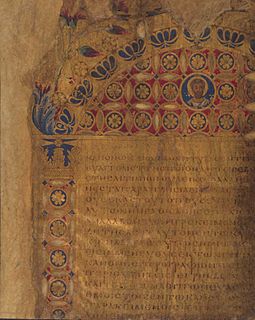 W
WByzantine literature is the Greek literature of the Middle Ages, whether written in the territory of the Byzantine Empire or outside its borders. It forms the second period in the history of Greek literature after Ancient Greek literature.
 W
WCarl Sandburg Home National Historic Site, located at 81 Carl Sandburg Lane near Hendersonville in the village of Flat Rock, North Carolina, preserves Connemara, the home of Pulitzer Prize-winning poet and writer Carl Sandburg. Though a Midwesterner, Sandburg and his family moved to this home in 1945 for the peace and solitude required for his writing and the more than 30 acres (120,000 m2) of pastureland required for his wife, Lilian, to raise her champion dairy goats. Sandburg spent the last twenty-two years of his life on this farm and published more than a third of his works while he resided here.
 W
WThe Centre for Research in the Arts, Social Sciences and Humanities (CRASSH) is an interdisciplinary research centre within the University of Cambridge. Founded in 2001, CRASSH came into being as a way to create interdisciplinary dialogue across the University’s many faculties and departments in the arts, social sciences, and humanities, as well as to build bridges with scientific subjects. It has now grown into one of the largest humanities institutes in the world and is a major presence in academic life in the UK. It serves at once to draw together disciplinary perspectives in Cambridge and to disseminate new ideas to audiences across Europe and beyond.
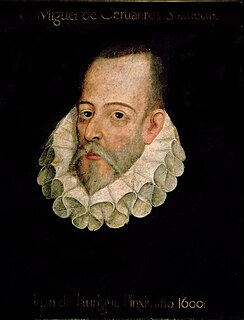 W
WMiguel de Cervantes Saavedra was a Spanish writer widely regarded as the greatest writer in the Spanish language, and one of the world's pre-eminent novelists. He is best known for his novel Don Quixote, a work often cited as both the first modern novel and one of the pinnacles of world literature.
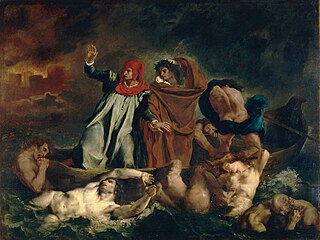 W
WThe Western classical tradition is the reception of classical Greco-Roman antiquity by later cultures, especially the post-classical West, involving texts, imagery, objects, ideas, institutions, monuments, architecture, cultural artifacts, rituals, practices, and sayings. Philosophy, political thought, and mythology are three major examples of how classical culture survives and continues to have influence. The West is one of a number of world cultures regarded as having a classical tradition, including the Indian, Chinese, Judaic, and Islamic traditions.
 W
WContemporary Latin is the form of the Latin language used since the end of the 19th century. Various kinds of contemporary Latin can be distinguished, including the use of Latin words in taxonomy, and the fuller ecclesiastical use in the Catholic Church – but Living or Spoken Latin is the primary subject of this article.
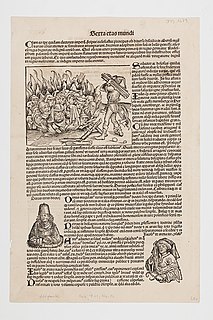 W
WEncyclopedias have progressed from the beginning of history in written form, through medieval and modern times in print, and most recently, displayed on computer and distributed via computer networks.
 W
WAn epigram is a brief, interesting, memorable, and sometimes surprising or satirical statement. The word is derived from the Greek ἐπίγραμμα epigramma "inscription" from ἐπιγράφειν epigraphein "to write on, to inscribe", and the literary device has been employed for over two millennia.
 W
WAn exemplum is a moral anecdote, brief or extended, real or fictitious, used to illustrate a point. The word is also used to express an action performed by another and used as an example or model.
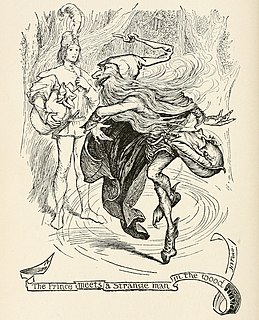 W
WElements of the supernatural and the fantastic were an element of literature from its beginning. The modern genre is distinguished from tales and folklore which contain fantastic elements, first by the acknowledged fictitious nature of the work, and second by the naming of an author. Works in which the marvels were not necessarily believed, or only half-believed, such as the European romances of chivalry and the tales of the Arabian Nights, slowly evolved into works with such traits. Authors like George MacDonald created the first explicitly fantastic works.
 W
WThe First Moderns: Profiles in the Origins of Twentieth-Century Thought is a book on Modernism by historian William Everdell, published in 1997 by the University of Chicago Press. A New York Times Notable Book of 1997, and included by the New York Public Library on its list of "25 Books to Remember from 1997," The First Moderns suggests that "the heart of Modernism is the postulate of ontological discontinuity."
 W
WAncient Greek literature is literature written in the Ancient Greek language from the earliest texts until the time of the Byzantine Empire. The earliest surviving works of ancient Greek literature, dating back to the early Archaic period, are the two epic poems the Iliad and the Odyssey, set in an idealized archaic past today identified as having some relation to the Mycenaean era. These two epics, along with the Homeric Hymns and the two poems of Hesiod, Theogony and Works and Days, comprised the major foundations of the Greek literary tradition that would continue into the Classical, Hellenistic, and Roman periods.
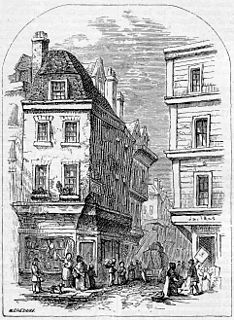 W
WUntil the early 19th century, Grub Street was a street close to London's impoverished Moorfields district that ran from Fore Street east of St Giles-without-Cripplegate north to Chiswell Street. It was pierced along its length with narrow entrances to alleys and courts, many of which retained the names of early signboards. Its bohemian society was set amidst the impoverished neighbourhood's low-rent dosshouses, brothels and coffeehouses.
 W
WThe history of books became an acknowledged academic discipline in the 1980s. Contributors to the discipline include specialists from the fields of textual scholarship, codicology, bibliography, philology, palaeography, art history, social history and cultural history. Its key purpose is to demonstrate that the book as an object, not just the text contained within it, is a conduit of interaction between readers and words.
 W
WThe history of literature in the Modern period in Europe begins with the Age of Enlightenment and the conclusion of the Baroque period in the 18th century, succeeding the Renaissance and Early Modern periods. The modern period begins later in the classical literary cultures outside Europe, for instance in Ottoman Turkey with the Tanzimat reforms (1820s), in Qajar Iran under Nasser al-Din Shah (1830s), in India with the end of the Mughal era and establishment of the British Raj (1850s), in Japan with the Meiji restoration (1860s), and in China with the New Culture Movement (1910s).
 W
WLesbian literature is a subgenre of literature addressing lesbian themes. It includes poetry, plays, fiction addressing lesbian characters, and non-fiction about lesbian-interest topics.
 W
WMater Verborum is a medieval encyclopedical dictionary written in Latin language around 1240. The document is especially renowned for more than 1000 comments written in it in the medieval Czech language. The manuscript is deposited in the Library of the National Museum (Prague), under signature X A 11.
 W
WThe Matter of Britain is the body of Medieval literature and legendary material associated with Great Britain and Brittany, and the legendary kings and heroes associated with it, particularly King Arthur. It was one of the three great story cycles recalled repeatedly in medieval literature, together with the Matter of France, which concerned the legends of Charlemagne, and the Matter of Rome, which included material derived from or inspired by classical mythology.
 W
WThe Museum of Modern Literature or LiMo is part of the German Literature Archive in Marbach am Neckar, Germany. The museum won its architect the Stirling Prize in 2007.
 W
WNew Latin is the revival of Latin used in original, scholarly, and scientific works since about 1500. Modern scholarly and technical nomenclature, such as in zoological and botanical taxonomy and international scientific vocabulary, draws extensively from New Latin vocabulary. New Latin includes extensive new word formation. As a language for full expression in prose or poetry, however, it is often distinguished from its successor, Contemporary Latin.
 W
WOccasional poetry is poetry composed for a particular occasion. In the history of literature, it is often studied in connection with orality, performance, and patronage.
 W
WThe Panchatantra is an ancient Indian collection of interrelated animal fables in Sanskrit verse and prose, arranged within a frame story. The surviving work is dated to roughly 200 BCE – 300 CE, based on older oral tradition. The text's author has been attributed to Vishnu Sharma in some recensions and Vasubhaga in others, both of which may be pen names. It is classical literature in a Hindu text, and based on older oral traditions with "animal fables that are as old as we are able to imagine".
 W
WPersian literature comprises oral compositions and written texts in the Persian language and is one of the world's oldest literatures. It spans over two-and-a-half millennia. Its sources have been within Greater Iran including present-day Iran, Iraq, Afghanistan, the Caucasus, and Turkey, regions of Central Asia and South Asia where the Persian language has historically been either the native or official language. For example, Rumi, one of the best-loved Persian poets, born in Balkh or Wakhsh, wrote in Persian and lived in Konya, at that time the capital of the Seljuks in Anatolia. The Ghaznavids conquered large territories in Central and South Asia and adopted Persian as their court language. There is thus Persian literature from Iran, Mesopotamia, Azerbaijan, the wider Caucasus, Turkey, Pakistan, Bangladesh, India, Tajikistan and other parts of Central Asia. Not all Persian literature is written in Persian, as some consider works written by ethnic Persians or Iranians in other languages, such as Greek and Arabic, to be included. At the same time, not all literature written in Persian is written by ethnic Persians or Iranians, as Turkic, Caucasian, and Indic poets and writers have also used the Persian language in the environment of Persianate cultures.
 W
WRenaissance Latin is a name given to the distinctive form of Latin style developed during the European Renaissance of the fourteenth to fifteenth centuries, particularly by the Renaissance humanism movement.
 W
WThe literary genre of science fiction is diverse, and its exact definition remains a contested question among both scholars and devotees. This lack of consensus is reflected in debates about the genre's history, particularly over determining its exact origins. There are two broad camps of thought, one that identifies the genre's roots in early fantastical works such as the Sumerian Epic of Gilgamesh. A second approach argues that science fiction only became possible sometime between the 17th and early 19th centuries, following the scientific revolution and major discoveries in astronomy, physics, and mathematics.
 W
WSilva rerum, polonized sylwa or and sometimes described as a home chronicle was a specific type of a book, a multi-generational chronicle, kept by many Polish and Lithuanian noble families from the 16th through 18th centuries. Some authors of modern Polish postmodern literature try to create works similar to the silvae rerum of the past. In historical Poland it was written by members of the szlachta as a diary or memoir for the entire family, recording family traditions, among other matters; they were not intended for a wider audience or printing ; some were also lent to friends of the family, who were allowed to add their comments to them. It was added to by many generations, and contained various information: diary-type entries on current events, memoirs, letters, political speeches, copies of legal documents, gossips, jokes and anecdotes, financial documents, economic information, philosophical musings, poems, genealogical trees, advice for the descendants and others. The wealth of information in silva is staggering; they contain anything that their authors wished to record for future generations. Some silvae rerum were of truly enormous proportions, with thousands of pages although most common size is from 500 to 800 pages. They were written from 16th century to the mid-18th century.
 W
WJoseph Spence was a historian, literary scholar and anecdotist, most famous for his collection of anecdotes that are an invaluable resource for historians of 18th-century English literature.
 W
WThe Swiss Literary Archives in Bern collects literary estates in all four national languages of Switzerland. It is part of the Swiss National Library operated by the Federal Office of Culture within the Federal Department of Home Affairs.
 W
WThe history of theatre charts the development of theatre over the past 2,500 years. While performative elements are present in every society, it is customary to acknowledge a distinction between theatre as an art form and entertainment and theatrical or performative elements in other activities. The history of theatre is primarily concerned with the origin and subsequent development of the theatre as an autonomous activity. Since classical Athens in the 6th century BC, vibrant traditions of theatre have flourished in cultures across the world.
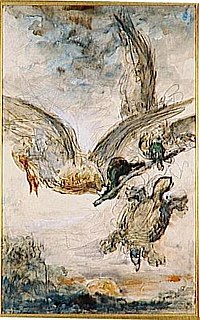 W
WThe Tortoise and the Birds is a fable of probable folk origin, early versions of which are found in both India and Greece. There are also African variants. The moral lessons to be learned from these differ and depend on the context in which they are told.
 W
WLiterature in World War I is generally thought to include poems, novels and drama; diaries, letters, and memoirs are often included in this category as well. Although the canon continues to be challenged, the texts most frequently taught in schools and universities are lyrics by Siegfried Sassoon and Wilfred Owen; poems by Ivor Gurney, Edward Thomas, Charles Sorley, David Jones and Isaac Rosenberg are also widely anthologised. Many of the works during and about the war were written by men because of the war's intense demand on the young men of that generation; however, a number of women created literature about the war, often observing the effects of the war on soldiers, domestic spaces, and the homefront more generally.
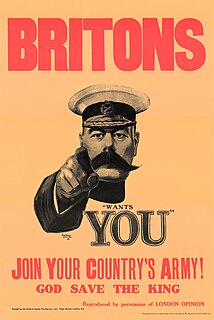 W
WThe First World War, which was fought between 1914 to 1918, had an immediate impact on popular culture. In over the hundred years since the war ended, the war has resulted in many artistic and cultural works from all sides and nations that participated in the war. This included artworks, books, poems, films, television, music, and more recently, video games. Many of these pieces were created by soldiers who took part in the war.